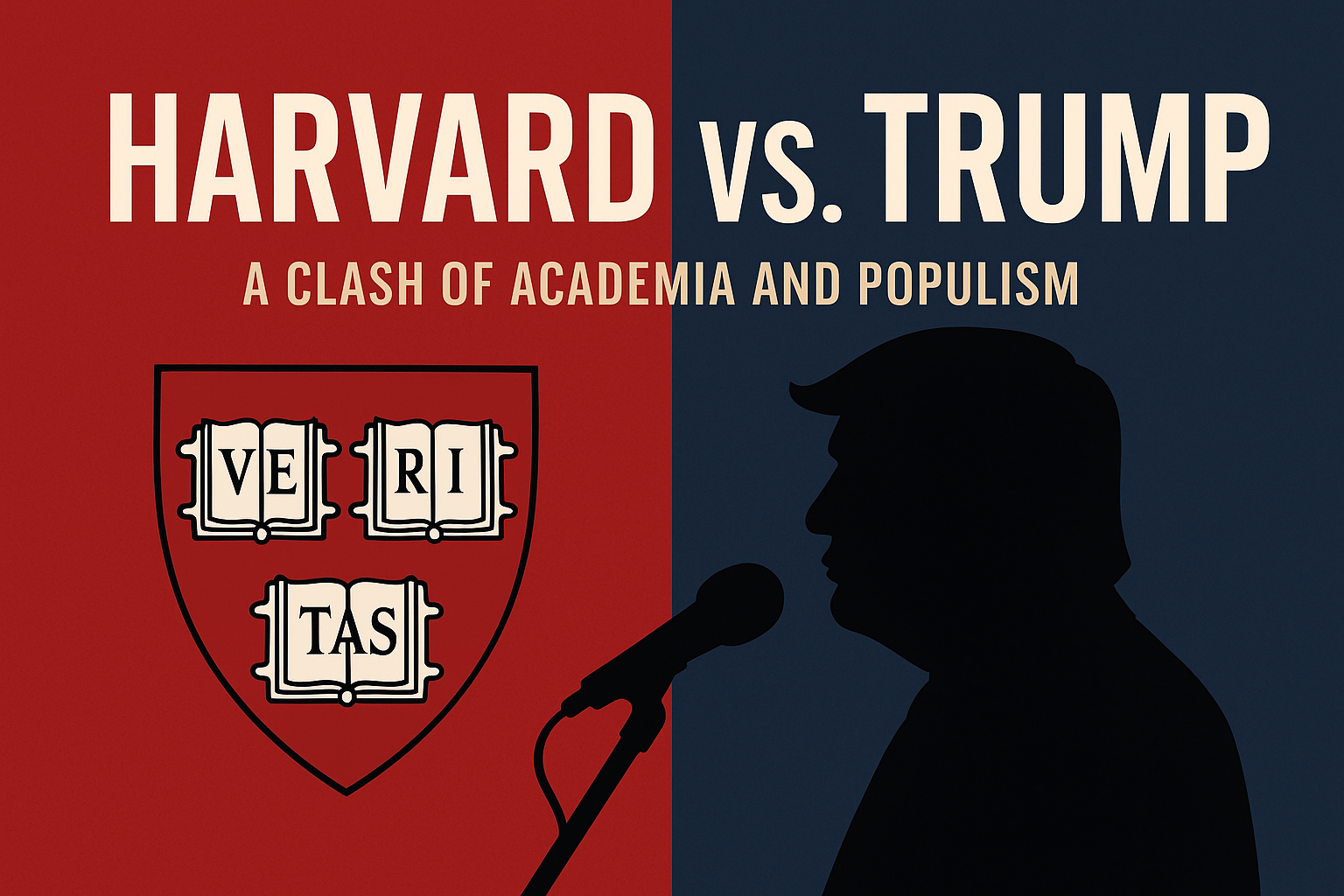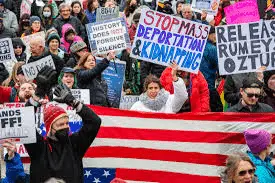The Battle for Academic Freedom: Harvard vs. the Trump Administration
In April 2025, Harvard University, one of the world’s most prestigious educational institutions, found itself at the epicenter of a political and academic conflict with the administration of President Donald Trump. This dispute, which began on April 14, 2025, is not just about money or politics—it’s a critical test of the principles on which American higher education stands. What exactly happened, why does it matter, and how is this story resonating online? Let’s dive into the details.
Background of the Conflict
The conflict erupted when the Trump administration sent Harvard a five-page document outlining demands that included:
- Eliminating programs focused on diversity, equity, and inclusion (DEI).
- Banning the wearing of masks during campus protests.
- Reforming admissions and hiring processes based on meritocracy principles.
- Limiting the influence of faculty and administration deemed “more devoted to activism than scholarship” (CNN).
These demands were partly motivated by criticism of Harvard’s response to student protests related to the Gaza war and its alleged failure to protect Jewish students from antisemitism, which the administration claims violates Title VI of the Civil Rights Act of 1964 (The New York Times).
Harvard, however, rejected these demands in less than 72 hours, marking the most open challenge to the administration since Trump began pressuring universities (The New York Times). University President Alan Garber stated: “The University will not surrender its independence or abandon its constitutional rights. No government—regardless of which party is in power—should dictate what private universities can teach, whom they can admit and hire, or what areas of study and research they can pursue” (Harvard Gazette).
Escalation of the Conflict
In response to Harvard’s stance, the administration took several harsh measures:
- Freezing Federal Funding: On April 14, 2025, the administration froze over $2.2 billion in federal grants and $60 million in contracts, including $256 million for research and $8.7 billion in future commitments, encompassing hospitals like Mass General, Dana-Farber Cancer Institute, and Boston Children’s (Reuters).
- Threat to Revoke Tax Exemptions: On April 15, 2025, President Trump threatened to strip Harvard of its tax-exempt status, which would cost the university millions annually. Reports indicate the IRS is considering revoking this status, though Harvard argues there is no legal basis for this (The New York Times).
- Restrictions on Foreign Students: On April 17, 2025, Homeland Security Secretary Kristi Noem announced the termination of two DHS grants worth over $2.7 million and demanded Harvard provide records of “illegal and violent activities” by foreign student visa holders by April 30. Failure to comply could result in Harvard losing its ability to enroll foreign students, severely damaging its global reputation and diversity (Reuters).
These measures are part of a broader strategy by the administration, which sent warning letters to 60 other universities, including Columbia, Northwestern, and the University of Michigan, threatening enforcement actions (The Guardian).
Impacts on Harvard and Other Universities
The conflict has the potential to significantly affect not only Harvard but also other universities and U.S. research:
- Financial Impacts: The freezing of over $2 billion and the threat to revoke tax exemptions jeopardize Harvard’s operations, including its affiliated hospitals. Losing the ability to enroll foreign students would further harm its diversity and global reputation.
- Inspiration for Other Universities: Harvard’s resistance is seen as an inspiration for other institutions facing similar pressures. For instance, Columbia, Northwestern, and the University of Michigan have also received warning letters from the administration (The New York Times).
- Scientific and Economic Impacts: Experts like Daniel P. Gross from Duke University warn that withdrawing funding would be “catastrophic” for American innovation (NPR). George Q. Daley from Harvard Medical School emphasized that jeopardizing government-university partnerships could weaken U.S. leadership in biotechnology, especially compared to China (Harvard Gazette). For example, NIH funding of $36.9 billion in 2024 generated $94.5 billion in economic activity and created 408,000 jobs, with every research dollar yielding $2.56 in economic activity (Harvard Gazette).
Political and Social Context
This dispute is part of a broader strategy by the Trump administration to reform the U.S. higher education system. According to sources like Politico, this initiative is driven by key figures such as Stephen Miller, Trump’s chief political advisor. The administration argues that universities like Harvard promote a “liberal agenda” and require greater oversight to align with national interests.
On the other hand, Harvard and other universities argue that these demands threaten academic freedom and independence, which are cornerstones of the American education system. For example, Steven Pinker, a Harvard psychology professor and co-chair of Harvard’s Council on Academic Freedom, highlighted the impacts on research and innovation (NPR).
On platforms like X and other social media, this conflict has sparked lively discussions, with opinions ranging from support for Harvard’s stance to criticism of the university for allegedly promoting a “liberal agenda.” This story has gone viral, making it an ideal subject for a blog post.
Why This Conflict Matters
This conflict is a symbol of deeper cultural and political divisions in the United States. On one side is the Trump administration, using federal funding as leverage to enforce its political agenda on universities it views as bastions of the liberal elite. On the other is Harvard, defending the principles of academic freedom and institutional autonomy that have long been valued in the American higher education system.
Harvard’s resistance could inspire other universities to take similar stands, potentially leading to a broader movement against government intervention. However, the administration’s actions send a clear message: non-compliance will have serious consequences. The outcome of this dispute could shape the future of government-academia relations.
What’s Next?
As of April 18, 2025, no new developments have been reported, leaving the situation tense. Harvard continues to uphold its refusal, while the administration escalates pressure on Harvard and other universities. This conflict is seen as a critical test of institutional autonomy and could have long-term implications for the U.S. educational and research landscape.
Monitoring further developments will be crucial, as this dispute could not only affect Harvard but also set a precedent for how far the government can intervene in private university policies. Regardless of the outcome, this story will leave a lasting mark on government-academia relations.
Timeline of Key Events
| Date | Event | Impact |
|---|---|---|
| April 2025 | Administration sent demands for policy changes to Harvard | Conflict begins |
| April 14, 2025 | Harvard rejected demands, administration froze $2.2 billion in funding | Tensions escalate |
| April 15, 2025 | Trump threatened to revoke tax-exempt status | Further escalation |
| April 17, 2025 | DHS threatened restrictions on foreign student enrollment | Threat to Harvard’s global reputation |
| April 18, 2025 | No new developments, situation remains unclear | Ongoing tension |
Conclusion
The dispute between Harvard and the Trump administration is more than a financial or political conflict; it’s a battle over the very principles on which American higher education is built. As the situation unfolds, it will be important to monitor not only the immediate impacts on Harvard but also the long-term consequences for academic freedom, institutional independence, and the role of universities in society. This story is dynamic, controversial, and worth following, as it could reshape the future of American education.
Key Citations:
- Harvard won’t comply with Trump administration’s demands – Harvard Gazette
- Why Harvard Decided to Fight Trump – The New York Times
- Trump administration says Harvard may lose ability to enroll foreign students – Reuters
- Why Harvard is standing its ground against Trump – POLITICO
- Analysis: Why Trump is relishing his duel with Harvard and other elite schools – CNN
- How Harvard’s pushback against Trump may embolden more US resistance – The Guardian
- Harvard’s Decision to Resist Trump Is ‘of Momentous Significance’ – The New York Times
- Trump Administration Highlights: Judge Scolds Government – The New York Times
- Trump Threatens Harvard’s Tax Status, Escalating Pressure Campaign – The New York Times
- What Trump’s showdown with Harvard means for research – NPR










Post Comment